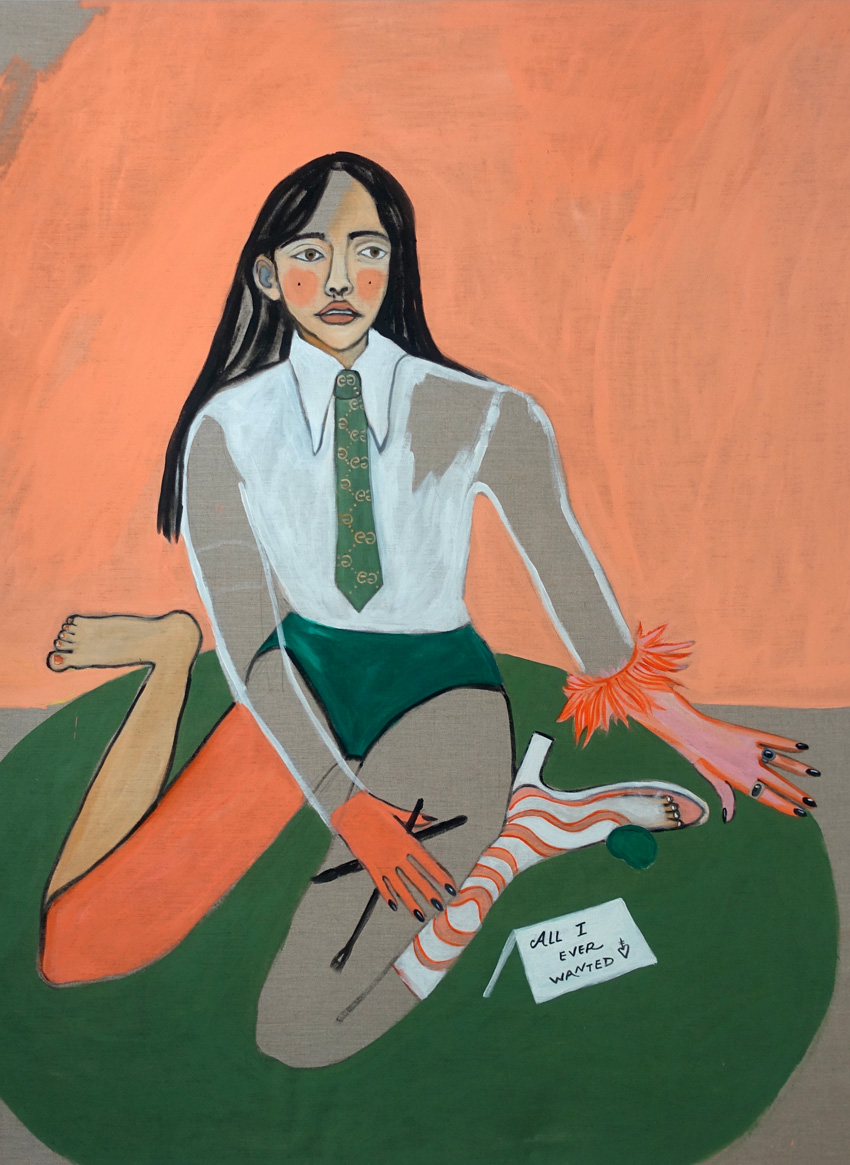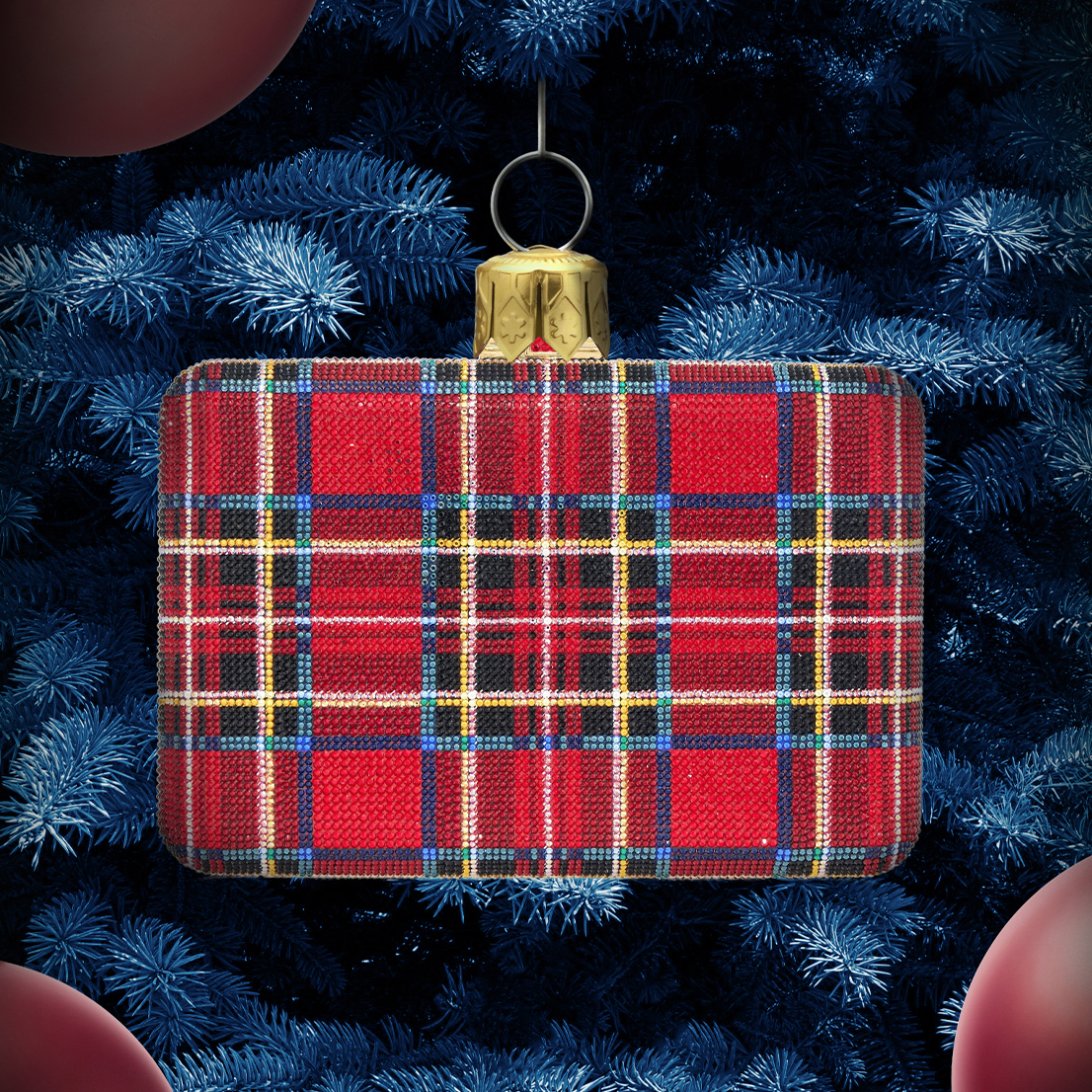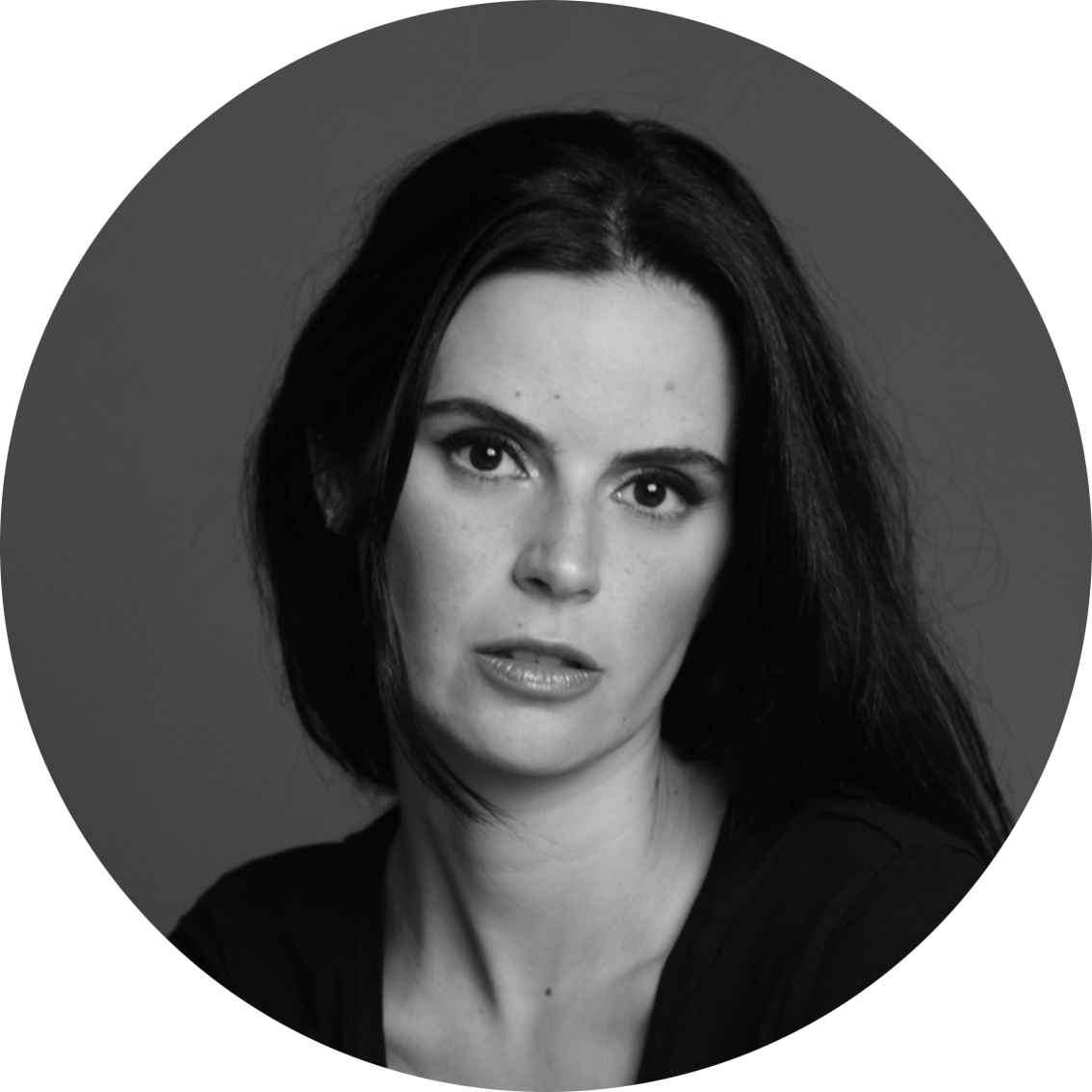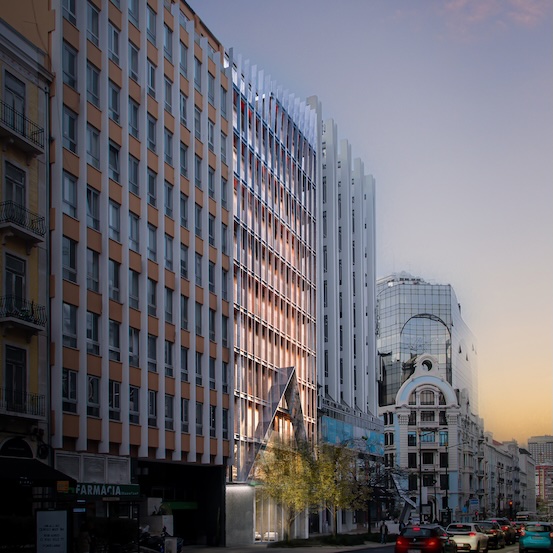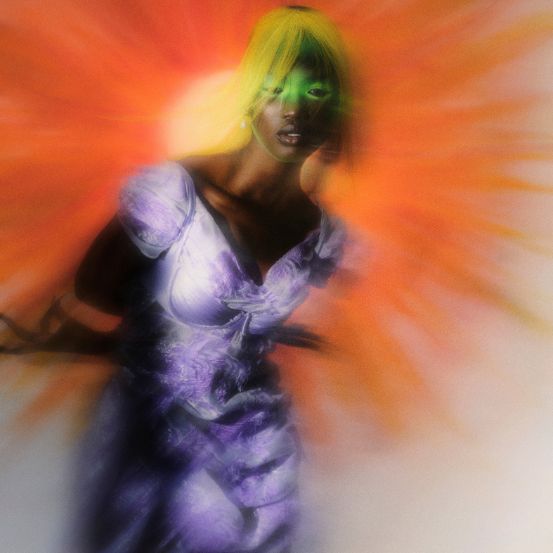From Portugal With Love
In an attempt to “condense the world into a single cry”, Bárbara Moura's work mirrors the tireless struggle for validation in a society that favors self-enactment and make-believe. Her paintings are a reflection on the present, but they belong to a future that has not yet arrived.
“I have in me all the women in the world.” This could be a good way for Bárbara Moura to introduce herself. Born in Lisbon, she has been based in Vienna since she decided to pursue painting as a (major) form of expression. She studied cinema, did illustration, but it was her brushes that turned her into one of the most fascinating artists of her generation - worldwide. Her work is coherent and provocative, in line with the zeitgeist of this troubled turn of the century, and this is also reflected in her discourse: despite her young age, Moura knows the path she wants to follow, and she knows how she wants to follow it. Feminism, vulnerability, sexuality, all of today's “hot” (and uncomfortable) topics pass through her canvases - which usually feature women. Because art is, and always will be, a form of political intervention. More or less silent.
Although born in Lisbon, you are kind of “citizen of the world.” Can you tell us a little about your artistic career - which is also a journey through various countries? Yes, after finishing my degree in cinema at the Escola Superior de Teatro e Cinema, I was faced with two options: either I would continue my career in the super-hierarchical environment of the audiovisual world (where I would depend on other people, a lot of time, scarce economic resources and where I would hardly be able to truly express myself, because I would have to “bend the knee” to the circumstances) or I would embark on a new course of studies that would allow me to find a faster and more autonomous form of expression. Although I still think that cinema is the most daring art of all, the first option was not an option for me. That's why I decided to study for a master's degree in art in London, where I lived for several years and where I mostly did illustration. Then, after a long visit to Vienna, I decided to stay on, and that's where my journey as a painter began. But I always tried to choose other places to spend some time, mostly following the routes of the great masters of art history, in order to develop the quality of my work, such as Florence.
Did you always wanted to be an artist - an illustrator, a painter - have you always wanted to “tell” about (your) world? I think I knew from a very early age, yes. Especially in terms of my relationship with drawing, which probably came from my mother. Fortunately, I also had the privilege of attending high school at the António Arroio School. I've always felt a certain need for constant expression, whether through drama classes, numerous home movies as a child or an obsession with drawing and the human figure.
Looking at your paintings, we can venture to say that feminism, irony, vulnerability, sexuality and - why not? - politics are themes that come to the fore in practically all of your work. Do you agree with this statement? Precisely. Yes, I do. Let's just say that inspiration comes a lot from current events, what's going on in the world and how I position myself in relation to these events. The worse the news, the more political the works become. That being said, I haven't been short of protest material lately.
Your paintings are apparently simple, but there is something hidden in them, almost mystical, that seems to transport us to other levels of consciousness. Every artist has a creative process - something very personal, very much their own. Can you tell us a little about yours? In terms of work routine, I can say that it's the same as most people in other professions, in the sense that I like to work from “9 to 5”, in a very organized way and, curiously, in silence. The painting process itself is a very solitary process, I spend a lot of time alone, which is extremely necessary for me to know how to proceed, and even so that I can listen to what the work has to say. For me, painting is in itself a mystical act, which actually has a lot in common with the process of an alchemist, for example. Not only in the eremitical lifestyle, but also in the process of creation: the mixing of paints and colors with the infinite universe of ideas and the transmutation of something invisible or intangible into something tangible and unique. Nowadays, I view my approach to my creative process in the same way that an athlete approaches a sport: discipline and consistency are the key to reaching the next level. There are days when I know exactly what I want to paint and others when I have no idea at all, and the white canvas in front of me looks almost like an abyss.
If you have to make a decision in terms of color, texture, what weighs more heavily: your imagination or your attempt to portray reality? Even though I paint figuratively, my imagination is definitely more important. Reality is the way it is, and trying to be exclusively faithful to it doesn't add anything authentic on my part. Imagination, on the other hand, I believe is the special ingredient that really adds value to any representation of reality.
What message, if any, do you want to convey with your work? Are your female protagonists, for example, a statement? Yes, I like to think of my protagonists as versions of myself, attentive and often critical of their surroundings and the themes they address. I think that most of the time I want to draw attention to the themes mentioned above, but at the same time I want these characters to act as a kind of mirror for the viewer. That's why the female figures often look at us in most of the works. The most important thing for me is that these figures are not neutral; I'm not interested in producing works that are merely decorative.
It's an old question, a heavy and uncomfortable cliché, but unfortunately we still need to bring it up: why do you think there are still so few (recognized) women artists? Moreover, why is there a need to refer to “women artists” when we are in the presence of someone of the female sex, and not just say “artists”? To this day, generations of women artists have tried to disidentify themselves from a category created for them, while male artists have no adjective associated with themselves. If we don't talk about “male artists”, it's because the artist is understood by default to be a man in the sacred History of Art. Consequently, women who want to be given the status of artists are caught in a paradox: denying the supposed particularity of “being a woman” does not allow them to be included in a decidedly masculine universalist canon. They are denied the title of “great artist”, to paraphrase Linda Nochlin, because they are victims of the sexist prejudice directed at art made by women, whether or not they have decided to claim to belong to a group called “women”. In other words: the explanation for the need to refer to “women artists” is proof that there is effectively no equality.
Most popular
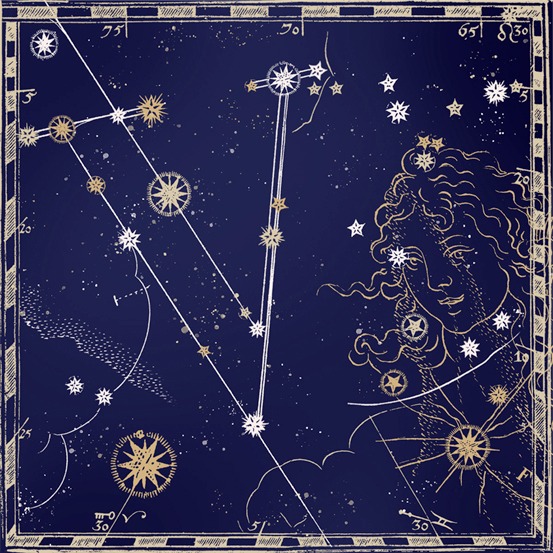
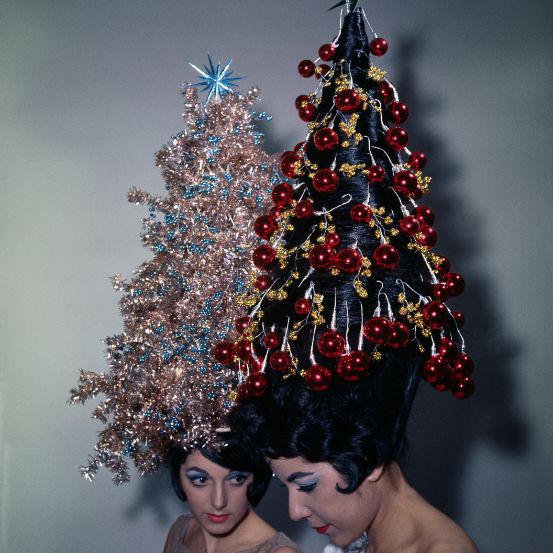
Relacionados




